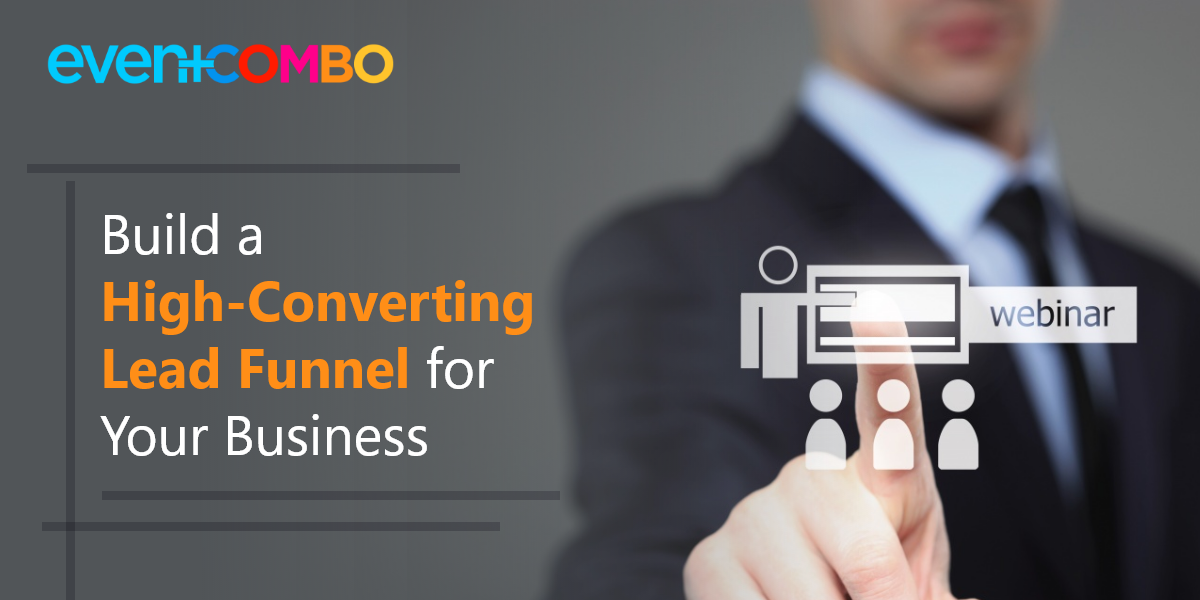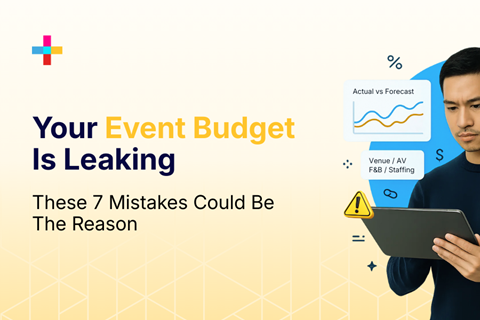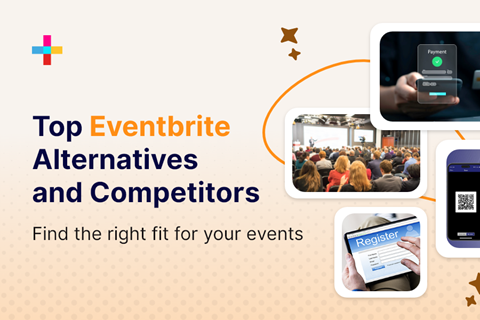

When it comes to online marketing and sales, lead generation is one of the most important aspects of any organization. Building relationships with potential customers and collecting their information is pivotal if you want to be able to get your marketing materials and products in front of an interested party. That’s why we’re constantly looking out for new opportunities for lead generation. Although the tried and tested methods like social media or email marketing remain popular for organizations looking to improve their lead generation, it’s time to consider more creative ways to produce quality leads.
That’s where webinars come in. Events have long been seen as a great way to gain information about potential customers and webinars are simply an online version of this. By having a captive audience of people who have taken time out of their busy lives to attend your webinar, you have access to a pool of engaged and interested leads.
So how can you make sure that you’re generating as many leads as possible from webinars? Read on to find our 6 key strategies for webinar lead generation.
What is Webinar Lead Generation?
Lead generation might not be the first thing that you think of when you consider webinars. After all, many webinars deal with pretty niche topics, whether that’s providing professional development, explaining how to use a new software, or training teams about specific topics such as identifying an exempt vs non exempt employee.
However, webinar lead generation is all about using those webinars to directly turn webinar attendees into high-quality leads. If you’re unsure about what leads are, you should simply think of them as potential customers. By having the contact details of people interested in your products or services, you have a clear audience for your marketing campaigns.

Of course, not all leads are created equal. If you want to have qualified leads that you can be confident will be receptive to your marketing, drawing from people who have already shown enough interest in your brand to attend a webinar is a no-brainer.
Integrating lead generation into your webinars will have a range of different benefits. Not only will you expand your pool of leads, but those leads will have an existing relationship with your organization that developed through the webinar. This means that they’ll be more likely to hand over contact details, as well as key information that you can use as valuable data, such as preferences, interests, and even case studies of successful customers.
Webinar lead generation will also give you a better qualitative understanding of your audience. By communicating with leads and working through key points of interest with them, you’ll be able to build more accurate audience profiles when you’re developing your marketing materials.
Generating Leads From Webinars: 6 Strategies
It’s clear, therefore, that webinar lead generation is a great occasion to generate leads – you’ll rarely have such an engaged audience of potential leads in one place outside of online events such as webinars.
However, hosting a webinar is a difficult task without having to worry about building in lead generation opportunities. After all, you’ll probably have focused on choosing an event management platform and designing the webinar itself rather than trying to generate leads.
That’s why we’ve put together our 6 top strategies for generating leads from webinars. By following these tips, you’ll easily be able to build lead generation into your webinars:
1. Integrate Webinars Into Your Wider Lead Generation Strategy
First of all, you should take a step back from just considering webinars. Your organization should already have a lead generation strategy and it’s certainly impossible to generate enough leads from webinars alone.

That’s why you need to think about your customer journey – place webinars within a longer map that goes from a potential customer’s first interaction with your brand to becoming a confirmed customer. This will help you to keep your brand values and messaging consistent across multiple different channels.
It will also help you to create webinars that support your other marketing efforts. If you have planned a round of content related to a new payroll service for small businesses, for instance, you might want to accompany that with a webinar focused on SMEs. This will help you to generate leads that will respond productively to your other marketing strategies.
2. Specify Your Target Audience
When you’re creating any online event, it’s crucial that you tailor it to a particular audience. This is especially important when it comes to creating a webinar for lead generation – as you’re treating it as a marketing opportunity, you should replicate the sort of detail that you put into considering your audience in social media or email marketing materials.
Make sure that you know your audience’s needs, as well as what they’re looking for when they attend a webinar. This understanding can be built from a range of different data points, such as surveys or past purchase information.
From there, you can create an audience persona that will exemplify the sort of person that will attend your webinar. Working backwards from this persona will let you create a webinar that is engaging as well as more likely to produce lead conversions – failing to specify your audience will just lead to a webinar that is interesting to no one in particular.
3. Create Webinars That Offer Value For Your Audience

Attending a webinar requires a considerable investment of your time and attention. Attendees will be giving up hours of their time in order to take part, so it’s imperative that you offer them value if you want them to provide you with lead details.
To ensure that your webinars are valuable to your audience, try to offer something that they won’t be able to find elsewhere. Just as you’ll have a unique selling point when you’re developing a product or service, make sure that your webinar is uniquely useful.
Ultimately, your online event will have to be interesting to get potential leads to attend and keep attending – there’s no point hoping to turn a webinar into a lead generation opportunity if no one attends!
4. Make Sure That Your Webinars Are Engaging
Similarly, it’s crucial that your webinars themselves are engaging and interesting for the attendees. Try to build in opportunities for your audience to directly engage with each other and the presented, such as by including Q&A sessions or polls.
Most obviously, this will keep your attendees interested in your webinar and ensure that they won’t leave half way through. Providing a high-quality webinar experience will also mean that attendees are likely to give positive word-of-mouth or share your webinar on social media.
However, these engagement features can also be a useful way of collecting leads. You could host a public chat alongside the webinar on your website, which would require users to create an account with your site before they can contribute. This will both ensure that attendees are active participants in the webinar and give you a way of contacting them with marketing materials.
5. Support Your CTAs With An Enticing Landing Page
Consider using lead nurturing software to automate follow-up emails and nurture the leads you've generated from the webinar. This will help you maintain engagement and guide potential customers through the conversion funnel.
If you’re using your webinar for lead generation, you’ll probably include a number of CTAs (calls to action). These should be included in links at the end of the webinar, in the post-event communications, and throughout the webinar itself.

However, there’s little point in having these CTAs if the landing page that you link to is ineffective. Make sure that your landing page is visually appealing, simple and easy to use, and is optimized for different devices.
You might also want to offer a range of different branches from this landing page. As well as linking to a sign-up page for marketing communications, you could link to more event invites to highlight your brand’s continued value to the customer.
6. Offer Lead Generation Opportunities After The Event
One of the biggest advantages of webinars compared to physical events is that they can continue to be accessed once the live content has ended. Providing a recording of the webinar after the event is a great way to increase your reach and ensure that your leads can access the webinar at their own convenience.
This also means that you have a piece of video content that you can use with new potential leads – using a webinar for lead generation is not just about the couple of hours when the webinar is taking place live!
As well as this, you should use the communication details provided by the attendees to keep in touch. Asking for feedback on the webinar or suggesting future webinars that they might be interested in are great ways to encourage lead generation and conversion once the initial webinar has finished.
It’s also worth considering that by combining inbound and outbound lead generation you can create a more comprehensive lead generation strategy.
Webinars - A Great Lead Generation Solution
If you’re looking for a new way to generate leads, webinars can be a great solution. By providing you with a pool of interested, engaged, and high-quality potential leads, webinars should be part of any organization’s lead generation strategy.
By following our 6 tips on generating leads from webinars, you can make the most of your online events and turn your webinars into indispensable lead generation opportunities. For more details, connect with our experts today - https://bit.ly/3R9bkuP
About the Author
Jesse Liszka is the Senior Communications Specialist at Paylocity, leading provider of cloud-based payroll and human capital management software. She is a highly experienced communications, client marketing and content specialist, with more than 12 years of experience. You can find her on LinkedIn.

Every event organizer knows the sinking feeling of watching a well-planned budget unravel. That initial estimate of $400,000 suddenly balloons to $540,000 due to unexpected fees and overlooked expenses.

Eventbrite is a common name in the event management space, but if you’re here, chances are it isn’t checking all your boxes. Like many professionals, you may be looking for Eventbrite alternatives or exploring...

Networking events remain the backbone of professional growth, whether you're building a business, recruiting talent, generating leads, or seeking strategic partnerships.